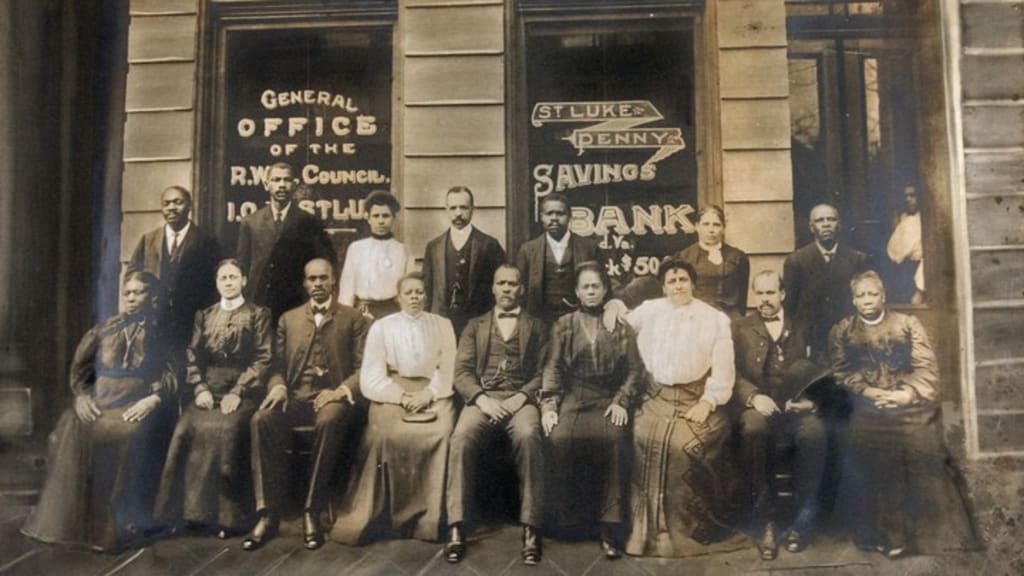Dr AC Jackson of Tulsa, Oklahoma
Black Wall Street

Dr AC Jackson was a thriving entrepreneur being one of the first best African American surgeons. He carved his part in the city of Tulsa. It was known at the time as Black Wall Street. As it had so many thriving black owned banks and other businesses there. He made a name fir himself. All was going so well until one day in 1921.
It’s 1921, white looters and the IS government destroy a prosperous Black business district and killed up to 300 people. With airplanes dropping bombs and all. A lawsuit, survivors of the catastrophe and descendants of victims said the city and state needed to rectify the tragic past.
Nearly 100 years after white mobs and the government conspired against and slaughtered Black residents and destroyed a prosperous Black business district in Tulsa, Okla., survivors of the massacre and descendants of the victims filed a lawsuit against the city and others on Tuesday, saying they must be compensated for the losses they endured.
Greenwood was once a booming business district in Tulsa, comprising some 40 blocks of restaurants, hotels and theatersowned and run by Black entrepreneurs.
But in 1921, it was destroyed by a white mob enraged after a confrontation with armed Black Tulsans trying to save a man from being lynched.
Decades later, Greenwood is now only half a block, according to lawyers for the plaintiffs, who accused Tulsa officials of appropriating the massacre, decrying the horrors of the past while trying to turn what remains of the district into a tourist destination. “It’s so much more than a tourist site — it’s a crime scene,” said the Rev. Dr. Robert Turner of the Historic Vernon African Methodist Episcopal Church in Tulsa, the only structure in Greenwood that was not destroyed by the mobs. “Until Tulsa does right by Greenwood, this district will forever be a crime scene.”
The lawsuit, which was filed in Tulsa County District Court, names seven defendants, including the Tulsa County sheriff, the Oklahoma National Guard and the city’s Chamber of Commerce. The sheriff’s office and a spokeswoman for the mayor of Tulsa, G.T. Bynum, declined to comment. The episode started on May 31, 1921, after a Black man was accused of sexually assaulting a white woman.
The man, Dick Rowland, was arrested that morning and jailed in the Tulsa County Courthouse. A large group of armed Black people, fearful Mr. Rowland would be lynched, rushed to the courthouse to ensure his safety.
The charges against Mr. Rowland were later dropped, and the authorities eventually concluded that he had most likely tripped and stepped on the woman’s foot, according to a 2001 report from the Oklahoma Commission to Study the Tulsa Race Riot of 1921.
But by June 1, the day after the arrest, a large mob of white Tulsans had begun setting fire to businesses in Greenwood. People were killed on the street or simply vanished. One of the plaintiffs is Don M. Adams, the nephew of Dr. A.C. Jackson, an accomplished Black surgeon who was shot in the stomach as he tried to surrender to the mob. He bled for five hours before he died, said Damario Solomon-Simmons, the lead lawyer for the plaintiffs. Another plaintiff, Lessie Benningfield Randle, was a child when the massacre occurred, according to the lawsuit. Ms. Randle, who is 105, says she still has flashbacks of corpses being stacked on the street as her neighborhood burned, according to the complaint. “She constantly relives the terrors,” said Eric Miller, a lawyer for the plaintiffs. “And yet the city of Tulsa has done nothing to compensate her for the damages it has inflicted on her life.”
As many as 300 Black people were killed and more than 1,200 homes were destroyed. Members of the Oklahoma National Guard arrested Black victims instead of white looters. Photos taken at the time show Black people being marched down the street at gunpoint, their arms raised over their heads.
This year archaeologists said they would excavate a cemetery in Tulsa to see if it held remains of any of the victims of the massacre. “We don’t know exactly how many people were killed,” Mr. Solomon-Simmons said. “All we know is that people did this with impunity. No one to this day has been held accountable.” He added, “Until today.”
In the years and decades that followed, according to the complaint, the city and the Chamber of Commerce tried to cover up the massacre, distorting the narrative to present Black residents as the violent instigators. City and county officials enacted zoning ordinances that made it virtually impossible for Black business owners and residents to rebuild. Public funds were diverted to predominantly white neighborhoods while Greenwood and North Tulsa, which is predominantly Black, were neglected, according to the lawsuit. The plaintiffs say the damage to Black people in Tulsa is evident to this day. The unemployment rate among Black residents is more than double that among white residents, and the median household income for white residents is $20,000 more than it is for Black residents, according to the complaint.
In 2005, the Supreme Court declined to hear a case brought by massacre victims, who appealed the decision of two federal court judges who said the victims waited too long to file their lawsuit.
Mr. Solomon-Simmons said he believed the lawsuit filed on Tuesday stood a stronger chance of succeeding because it is based on a state law that forbids an act that “annoys, injures or endangers” the sense of safety and health of an entire community, neighborhood or group of people.
He cited a 2019 decision against Johnson & Johnson, which was ordered in an opioid trial to pay Oklahoma $572 million for causing a “public nuisance.”
In that case, a judge ruled that the company had intentionally downplayed the dangers and oversold the benefits of opioids, “exponentially increasing rates of addiction, overdose deaths” and babies born exposed to drugs.
The original perpetrators of the Tulsa massacre are no longer in power, but the agencies they represented remain in place and are obligated to provide justice, Mr. Solomon-Simmons said. The lawsuit filed in Tulsa seeks many forms of redress including unspecified punitive damages as well as top priority for Black Tulsans in the awarding of city contracts and tax relief and scholarships for the descendants. “The remedy for public nuisance is for the folks who caused the problem to fix it,” Mr. Miller said.
This massacre began during the Memorial Day weekend after 19-year-old Dick Rowland, a black shoeshiner, was accused of assaulting Sarah Page, the 17-year-old white elevator operator of the nearby Drexel Building. He was taken into custody. After the arrest, rumors spread through the city that Rowland was to be lynched.Tulsa, Okla., burning in 1921. On June 1 of that year, mobs of white residents attacked Black residents and Black-owned businesses in the Greenwood district.
This was a striving district of black owned banks and so much more. Destroyed over race , a battle we are still fighting today. But I look up to the black entrepreneur one of the first black surgeons Dr AC Jackson. Also love to all the other who had contributed and made a beautiful African American owned community. If this tragedy never happened a lot of African Americans lives would have been different now and this would had spread to other areas as there were other areas thriving with black businesses but not as much as black wall st. May we learn from the mistakes made.
A Cosme
About the Creator
Alfred Cosme
I write as a hobby. Mostly as hobby to pass time. I do a lot of reading and research and formulate theories, history, and more. I love the writing process and also always have been a poet. I write a lot of poetry✌🏼❤️






Comments
There are no comments for this story
Be the first to respond and start the conversation.